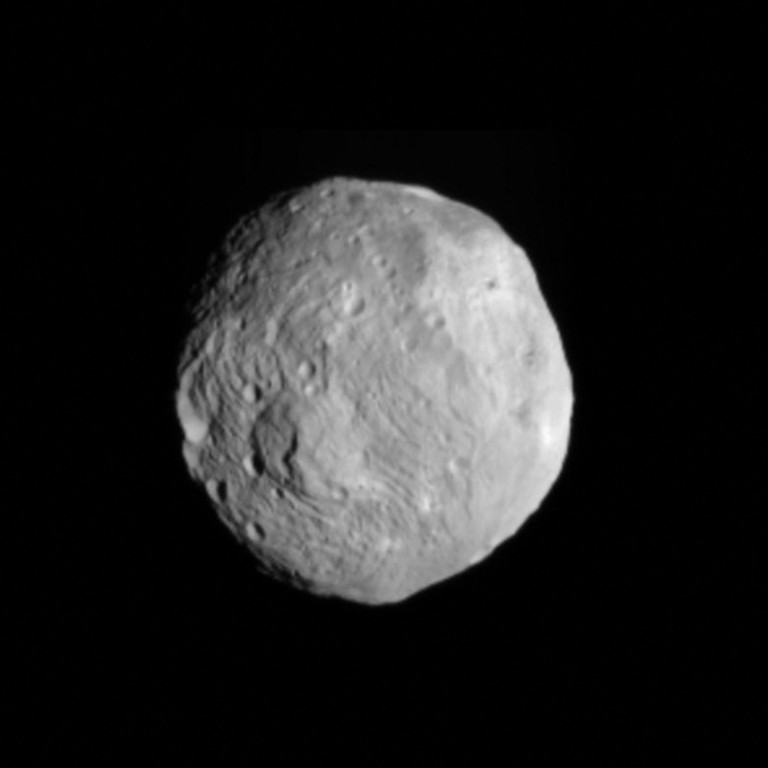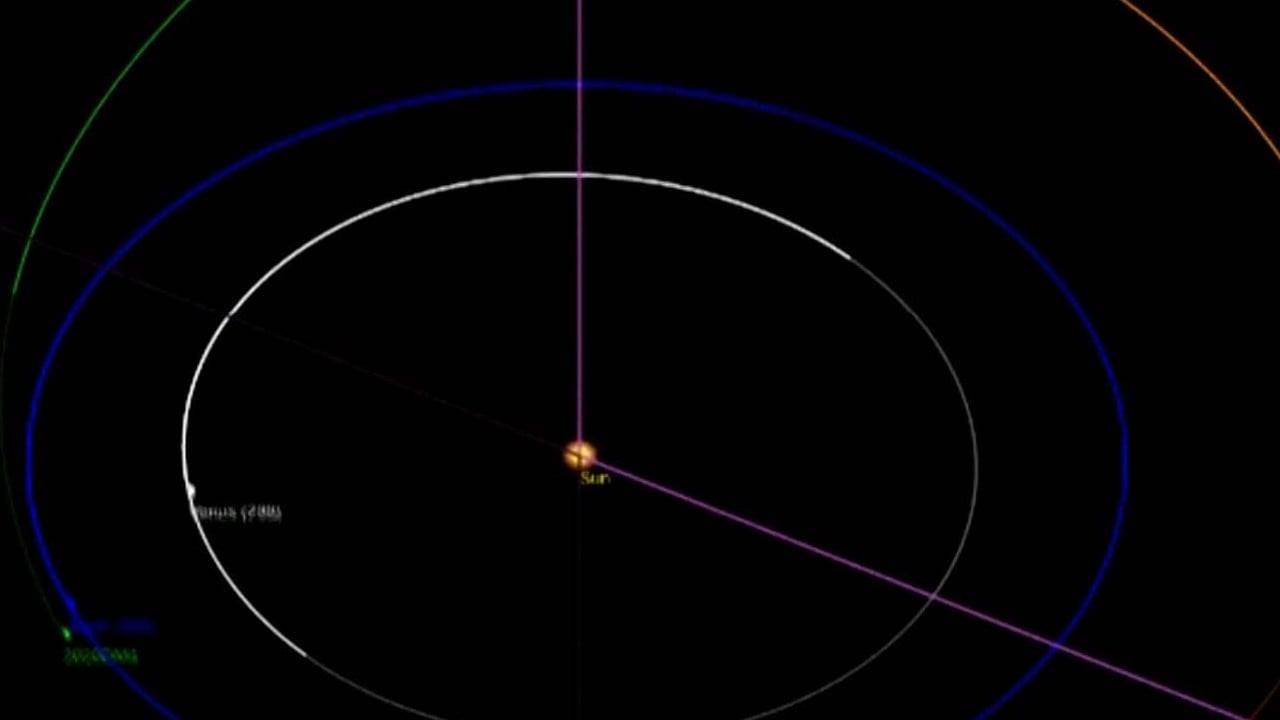
Meteorite suggests asteroid Vesta may once have had magma lake just like the early moon, say Chinese scientists
- Researchers find first evidence that the surface of Vesta, the second largest object in the asteroid belt, was once covered in molten rock
- The ‘planetary embryo’ could offer clues about how bodies were formed during the early days of the solar system
The researchers said that while Vesta is much smaller than the moon and other planets, the “planetary embryo” has a similar evolutionary history to the moon.

Vesta, which is about 530km (330 miles) wide, has a structure of core, mantle and crust – much like the moon and Earth. The moon has a diameter of nearly 3,500km while the Earth’s is almost 13,000km.
Vesta emerged in the first 1 to 2 million years after the solar system formed and is now the second largest body in the asteroid belt, which sits between Mars and Jupiter.
Space scientists view Vesta and other asteroids as protoplanets and have been looking for clues about how they evolved.
The Chinese researchers, from institutes in Guiyang, Hefei, Changsha, Nanjing and Xian, said: “Its structure and chemical features provide critical insights into the origin and formation history of parent planetary bodies in the early solar system.”
Soon after the moon’s formation its outer surface melted, forming an ocean of magma on the surface.
The latest study, published in the peer-reviewed journal Nature Astronomy on Wednesday, looks at a 230-gram meteorite that was found in Algeria in 2021 and sold to a Chinese buyer the following year.
The Chinese researchers later confirmed its Vestan origin by comparing it with previous samples traced to the asteroid.
Lead author Li Shijie, a researcher at the Chinese Academy of Sciences Centre for Lunar and Planetary Sciences in Guiyang, said the analysis showed that more than 90 per cent of the meteorite is composed of a mineral called anorthite, a key indicator of a magma ocean.
Anorthosites are formed when magma oceans solidify and the only ones that have previously been found have come from the Earth or the moon.
Asteroid dust caused 15-year winter that killed dinosaurs, study says
Previous meteorites from Vesta have shown no signs of the mineral, but Li said the new discovery suggested there was an ancient magma ocean on the asteroid.
He said their calculations suggested that anorthite formed at a depth of 30km in the magma ocean and may have floated to the surface of Vesta, a process that could happen in as little as 200 years or as long as 20,000 years.

Li said it was possible that the evidence for the magma lake had been removed when the asteroid collided with other objects in space as the solar system was taking shape.
“In the early days of the solar system, intensive collisional bombardment events were common as proven in previous studies. Large amounts of crust – just like eggshells – may have been eroded,” Li said.


